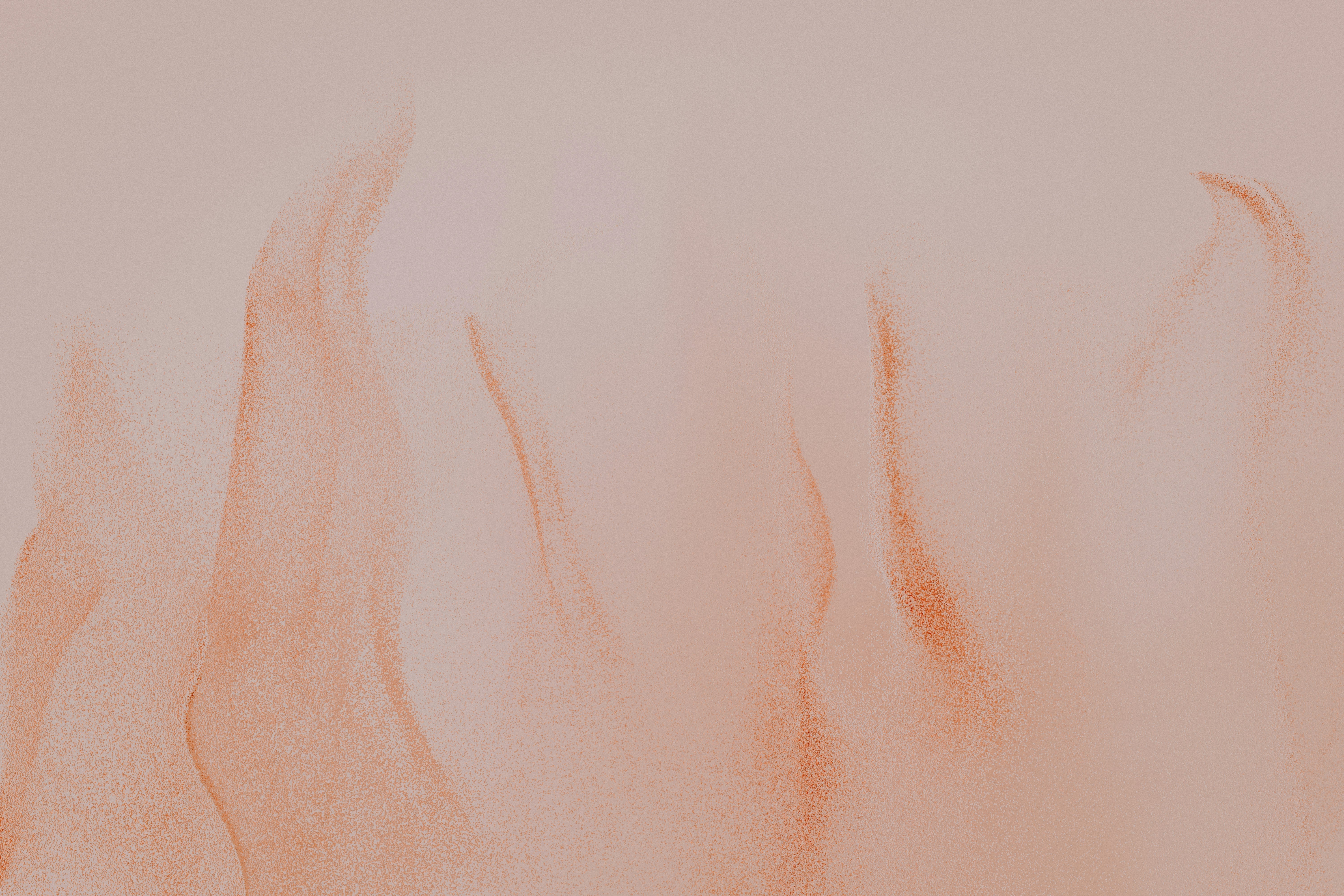by Jes Williams @feelmoregooder
Red light therapy has gained traction in recent years and it’s time we examine its use and validity for positive health outcomes. Just like any other subcategory under the “biohacking” umbrella, it’s worth considering how much sense this practice makes when looked at through the lens of human biology and the patterns that we see naturally occurring in nature.
Red Light in Nature
Since artificial light sources didn’t come along until the 1890’s, our ancestors relied solely on moonlight, fire light, and candle light to see after sundown. These sources of light do not contain the wavelengths referred to as blue light - which suppress melatonin secretion, elevate blood sugar, and even impact your metabolic health & waistline. (1, 2) However, firelight has been found to promote relaxation and positively impact arterial blood pressure. (29)
The issue with modern-day lighting setups is that they are commonly rich in high-lux, blue light. This means they are too bright and contain a unnatural source of light at the hour we are exposed to it. This disrupts our circadian rhythm, our body’s innate repair mechanisms that act at night, and thus negatively impacts our overall health.
Another source of red light in nature (with a different application, which we’ll get in the next section) is sunlight. Depending on the time of day, sunlight contains upwards of 40-50% red light. This means that you can receive the benefits of red light therapy from sunlight itself. Panels and units that plug into a power source can be used secondarily to supplement.
Two Ways to Look at Red Light
When thinking of red light, there are two perspectives to consider. The first is that using red light as a illumination source after sundown is a great practice for circadian rhythm and health. Too, wearing blue-light blocking glasses help in this way as well, by limiting our blue light exposure after dark. This blog post will not be focused on that application of dim, red light at night - but it is undoubtedly useful to know about.
The second way to look at and utilize red light is for healing and repairing the body in numerous ways, which we will highlight below. With this method, you’re typically using a higher-lux (more powerful) source of red light with the purpose of helping the body repair & regenerate.
It’s important to point out that a red light as a night light and a red light for healing are two different things - mainly because you would not want a high-lux, bright, red light for nightime. Ideally, you have a more dim option for a nightlight and a more powerful light for the healing application– which you ideally use when the sun is up to prevent any circadian disruption. (26)
What is Red Light?
Red light, naturally occurring in sunlight (sunlight is about 42% red light)(3), refers to the aspect of the light spectrum ranging from 630 nanometers to 750 nanometers. (4) These wavelengths are longer than their ultraviolet counterparts, which range from 100 nanometers to 400 nanometers. (5)
Because of this longer wavelength, red light is actually capable of penetrating the tissues at varying depths, depending on the precise wavelength. (6) It is used for issues that are are both skin-deep and way beyond skin-deep, with this capability.
What Are The Benefits of Red Light Therapy?
-Creates exclusion zone (also known as structured) water in the body (7, 24, 25)
-Catalyzes light-induced ATP production in the cell (8)
-Penetrates completely through skin for regeneration (10)
-Reduces fine lines, wrinkles, skin roughness, and increases collagen density (9)
-Improves the health of the microbiome (10, 15, 16, 17, 18)
-Improves inflammatory skin conditions, pigmentation issues, and mitigates hair loss (11, 27)
-Protects against excess UV-mediated skin damage (12)
-Aids injured sites, brings down pain and inflammation, reduces edema, promotes relaxation, and reduces tenderness (13, 18)
-Shown to aid mental ailments and diseases, with no side effects (14, 15, 16)
-Enhanced learning and memory abilities (17)
-Improves low mood, depressive states, and anxious episodes (18, 20)
-Improves melatonin curve/levels for deeper sleep (19)
-Enhances tissue repair and immune response (20)
-Reduces blood glucose levels (23)
-Improves mitochondria function (28)
Light Replacing Pharmaceutical Drugs
Research on photobiomodulation by Tiina Karu titled “Is It Time to Consider Photobiomodulation As a Drug Equivalent?” shows us some impressive things about red light – information that’s even made it to NASA. (20, 21, 22) Karu’s research reveals that “neuroprotective treatment with red and near infrared radiation (NIR) prevented mitochondrial dysfunction and dopamine loss.” Too, it is shown to be promising in treating degenerative neuron diseases.
References:
- https://www.health.harvard.edu/staying-healthy/blue-light-has-a-dark-side#:~:text=While%20light%20of%20any%20kind,eyewear%20that%20blocks%20blue%20light.
- https://journals.plos.org/plosone/article?id=10.1371/journal.pone.0155601
- https://jackkruse.com/hypoxia-4-red-light-blue-light-1-2-3/
- https://scied.ucar.edu/image/wavelength-blue-and-red-light-image
- https://www.who.int/news-room/questions-and-answers/item/radiation-ultraviolet-(uv)#:~:text=The%20UV%20region%20covers%20the,(100%2D280%20nm).
- https://jackkruse.com/the-dark-knight/
- https://jackkruse.com/time-7-photoelectric-effect/
- https://www.nature.com/articles/srep12029
- https://pmc.ncbi.nlm.nih.gov/articles/PMC3926176/
- https://mitigatestress.com/red-light-therapy-guide/
- https://pubmed.ncbi.nlm.nih.gov/33471046/
- https://pmc.ncbi.nlm.nih.gov/articles/PMC4605358/
- https://pmc.ncbi.nlm.nih.gov/articles/PMC5215870/
- https://www.eurekalert.org/news-releases/931749
- https://pubmed.ncbi.nlm.nih.gov/33610085/
- https://pubmed.ncbi.nlm.nih.gov/35055364/
- https://pubmed.ncbi.nlm.nih.gov/31831179/
- https://pubmed.ncbi.nlm.nih.gov/37239169/
- https://www.theguardian.com/wellness/2024/sep/25/what-is-red-light-therapy#:~:text=Does%20red%20light%20therapy%20provide,the%20treatments%20emerges%2C%20says%20Liu.
- https://pmc.ncbi.nlm.nih.gov/articles/PMC3643261/
- https://institutobeatrizyamada.com.br/wp/wp-content/uploads/artigos-iby/Photobiology-of-Low-Power-Laser-Effects.pdf
- https://spinoff.nasa.gov/NASA-Research-Illuminates-Medical-Uses-of-Light
- https://www.ucl.ac.uk/news/2024/feb/red-light-can-reduce-blood-glucose-levels#:~:text=21%20February%202024,in%20the%20Journal%20of%20Biophotonics.
- https://pmc.ncbi.nlm.nih.gov/articles/PMC7404113
- https://pmc.ncbi.nlm.nih.gov/articles/PMC6122250/
- https://pubmed.ncbi.nlm.nih.gov/16687299/
- https://pmc.ncbi.nlm.nih.gov/articles/PMC4126803/
- https://www.nature.com/articles/s41433-024-03091-4
- https://www.sciencedirect.com/science/article/pii/S2214629620302711#:~:text=Recent%20research%20suggests%20several%20psychological,process%20and%20a%20restorative%20process.







2 Comment
Thank you for this informative and well supported report on Red Light ! I have been using red light for years, since it first became available to the public following a NASA discovery (accidental) on the benefits to the skin. Being in the skin care field at the time it was of extreme interest. So wonderful for you to keep the “light” going and expand on the totality of benefits to the human body and illustrate how this modality may replace some drug protocols. SAVE US :)
thank you
Serenity Stewart
———
BrocElite replied:
Thank you for this great feedback. We love knowing who these posts reach and it’s especially exciting to connect people already on this wavelength. Thanks for being here!
Thank you for this article and all the links. You are going to save the world. Just a note to let you know how much I appreciate all that you do!
———
BrocElite replied:
Hi Julie, thank you for taking the time to leave this encouraging comment. We’re glad you’re here!